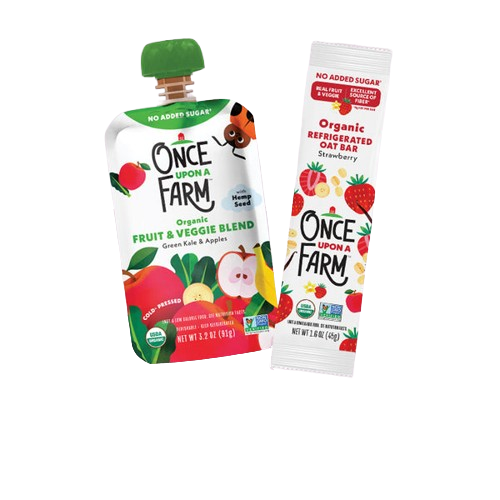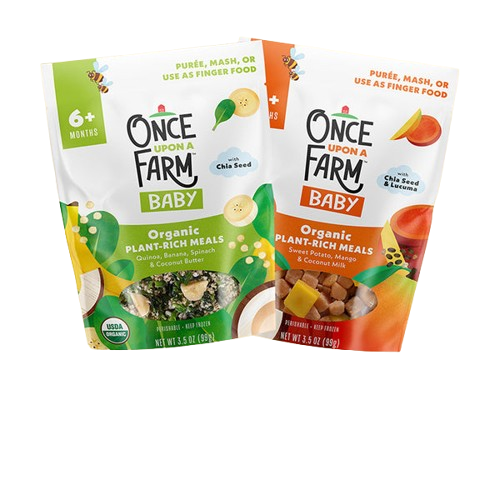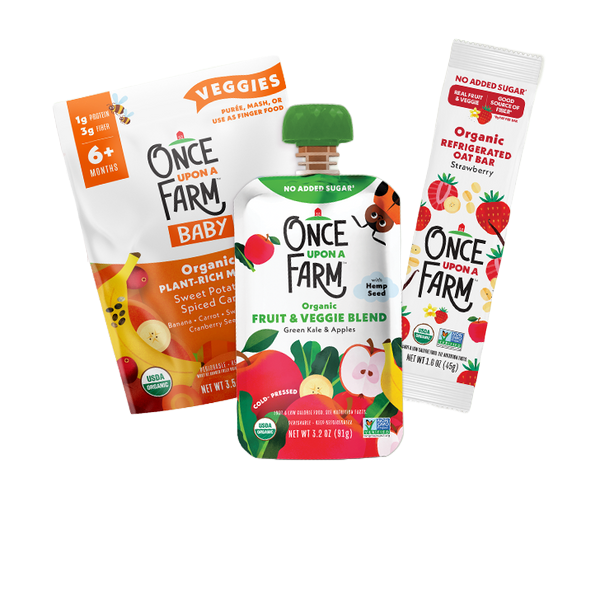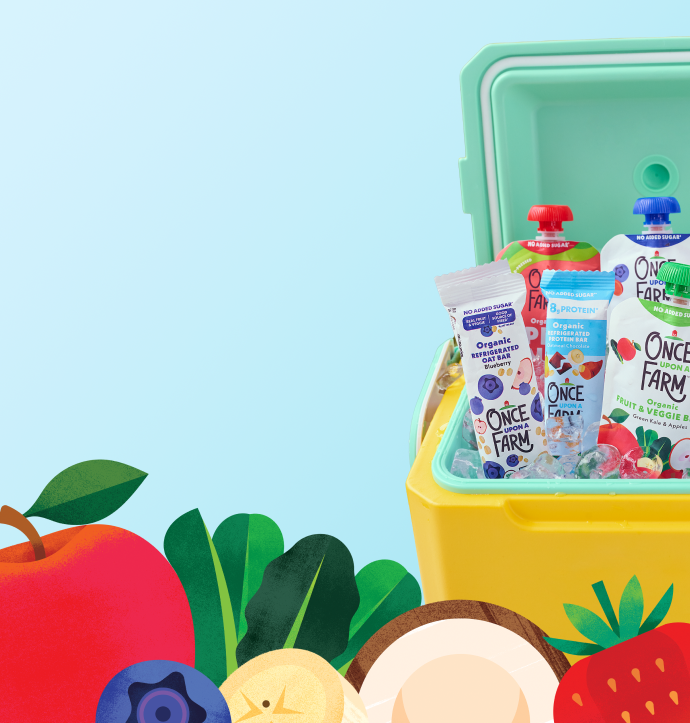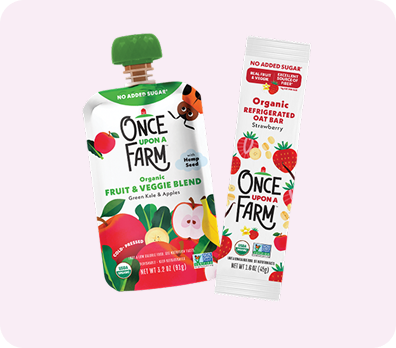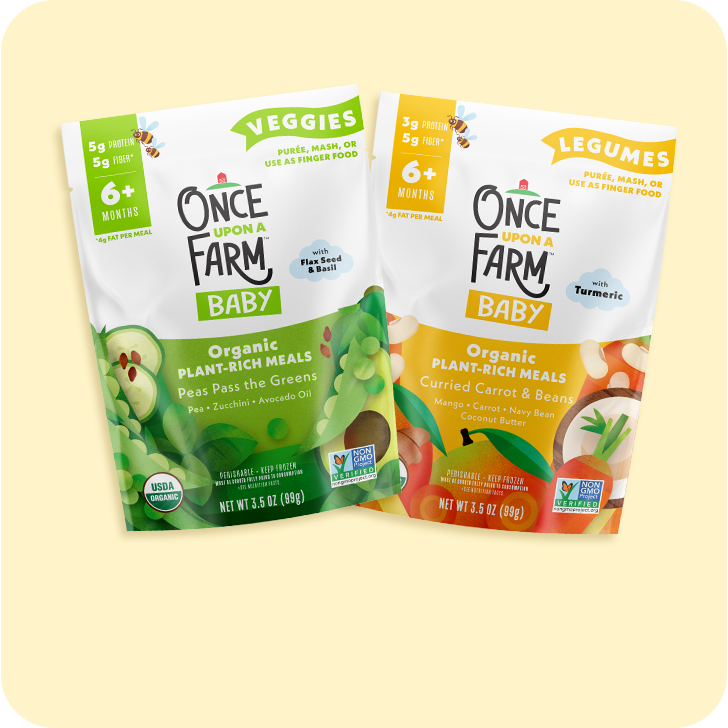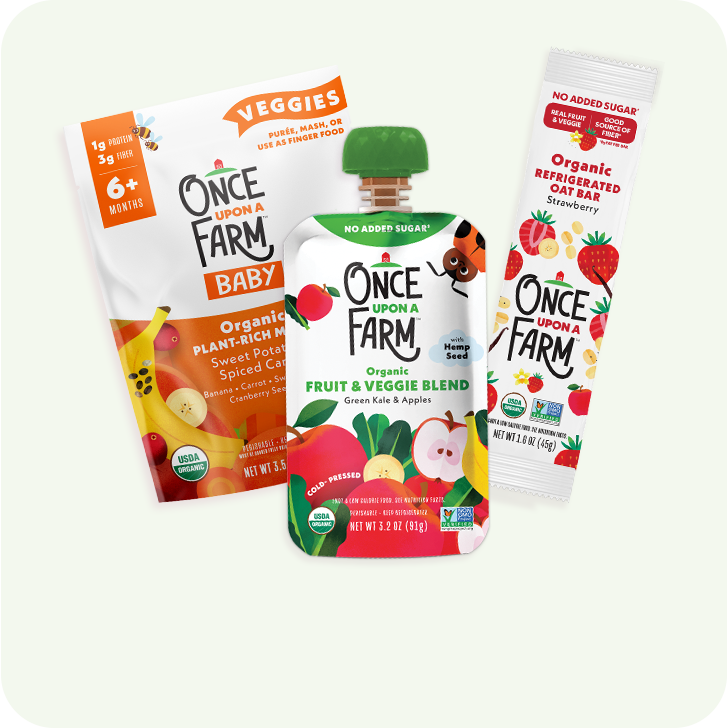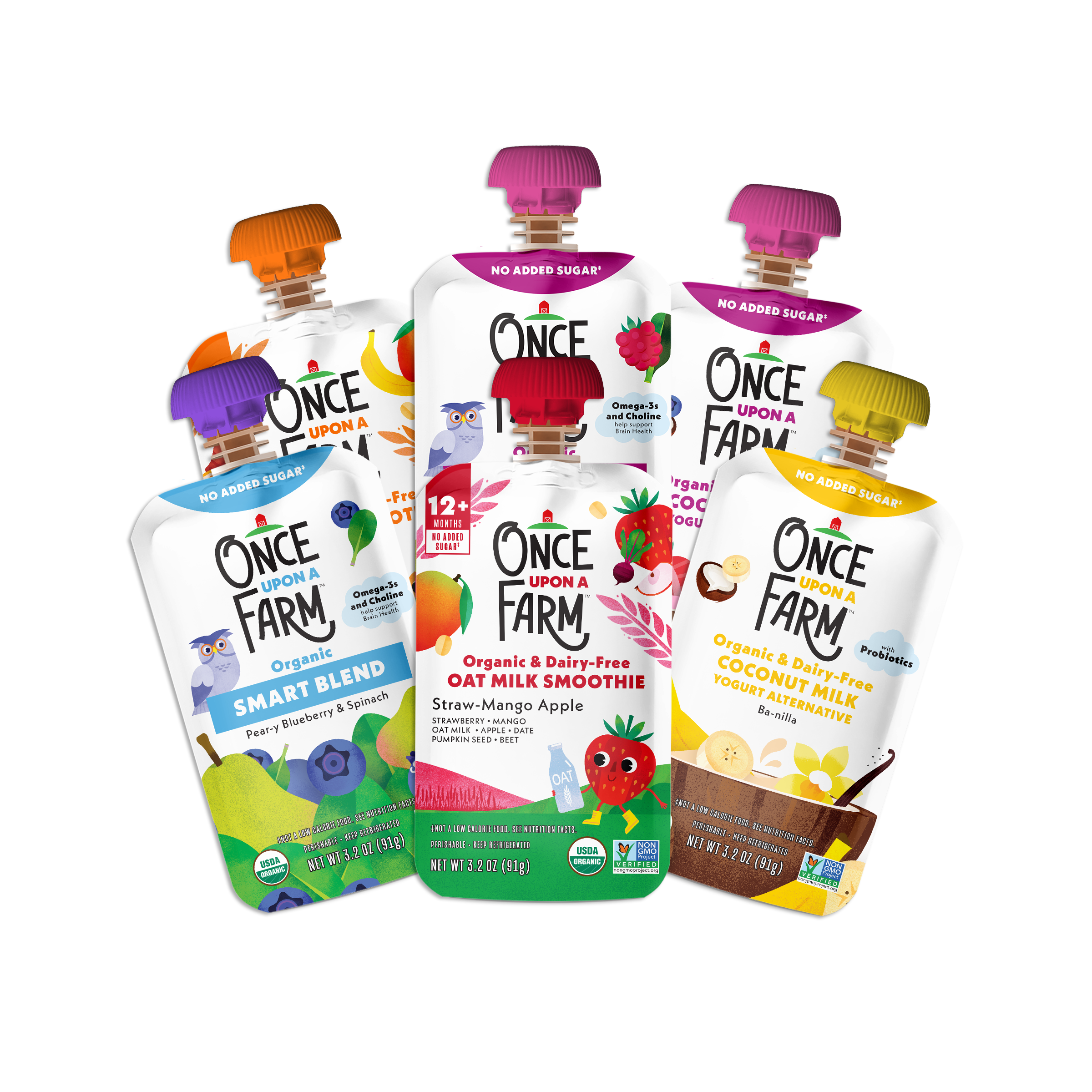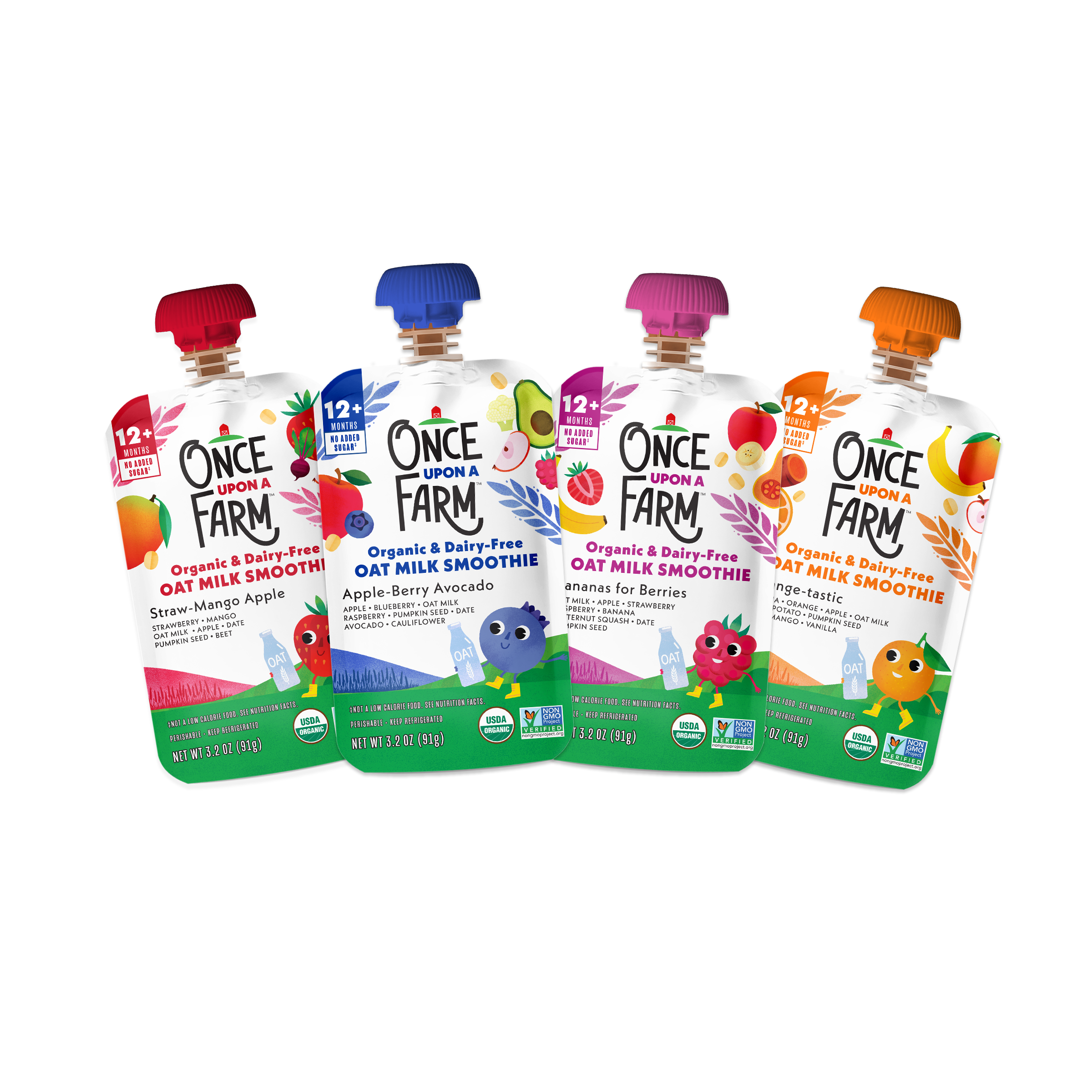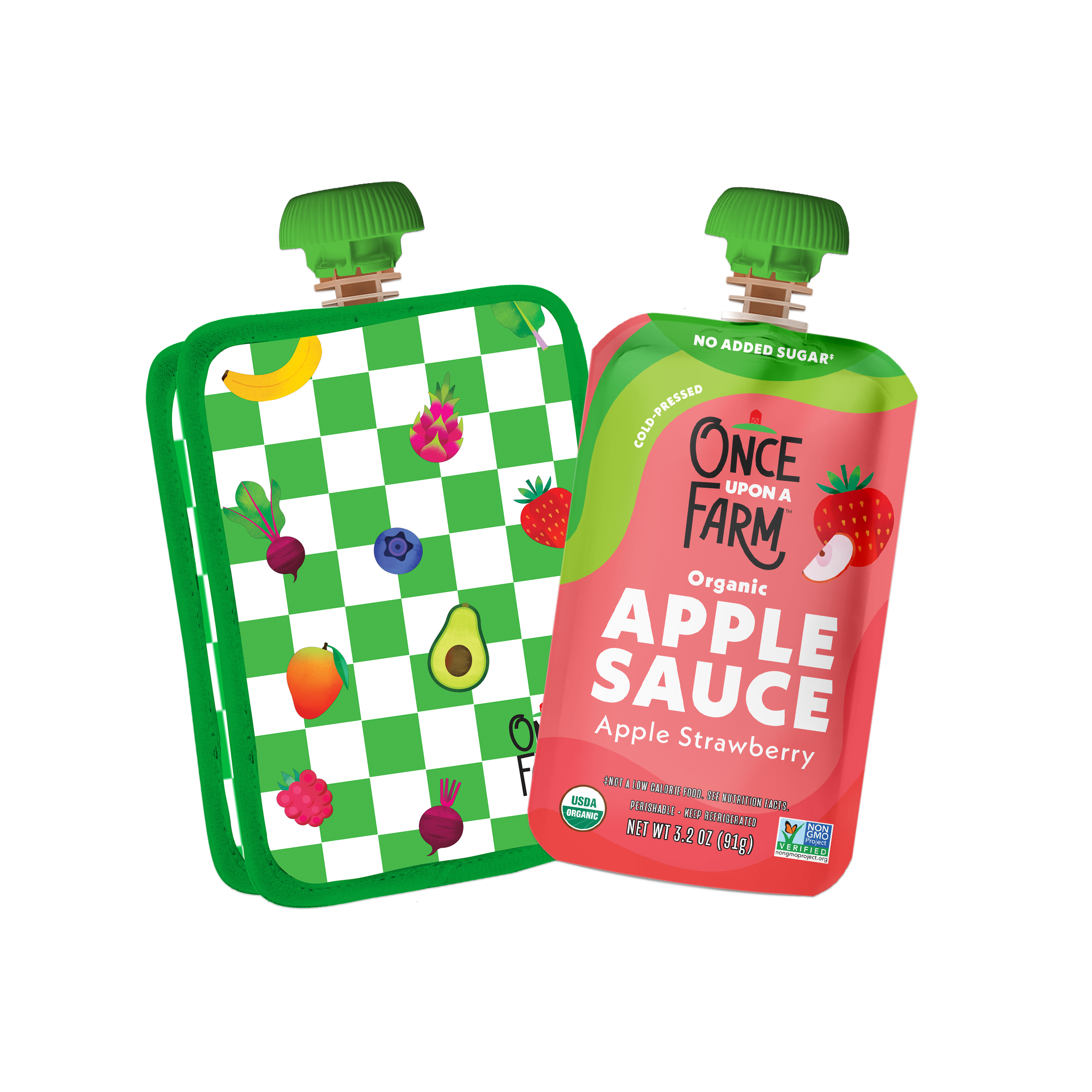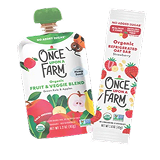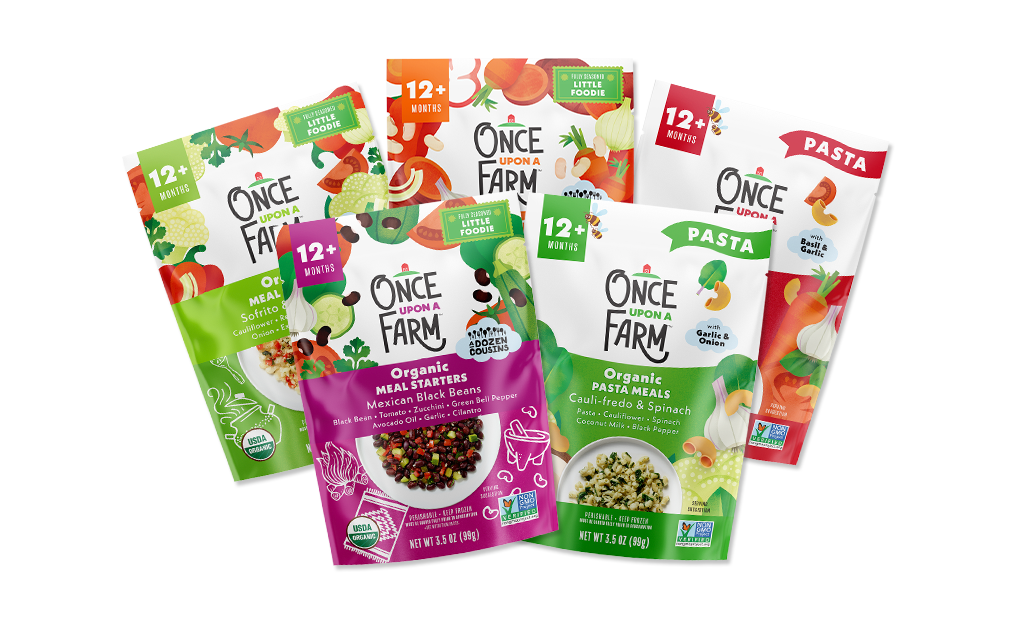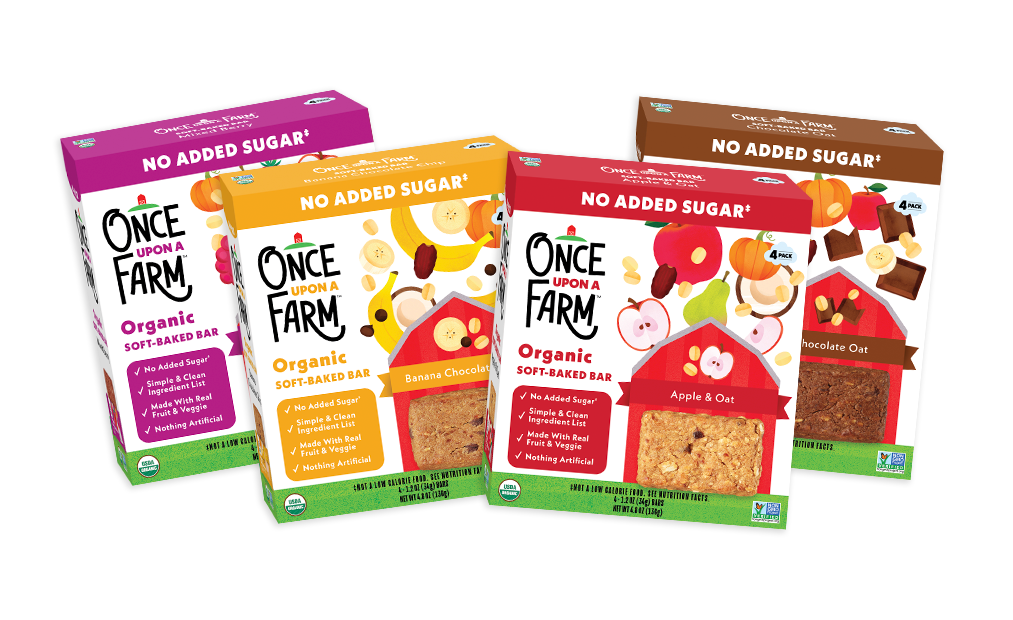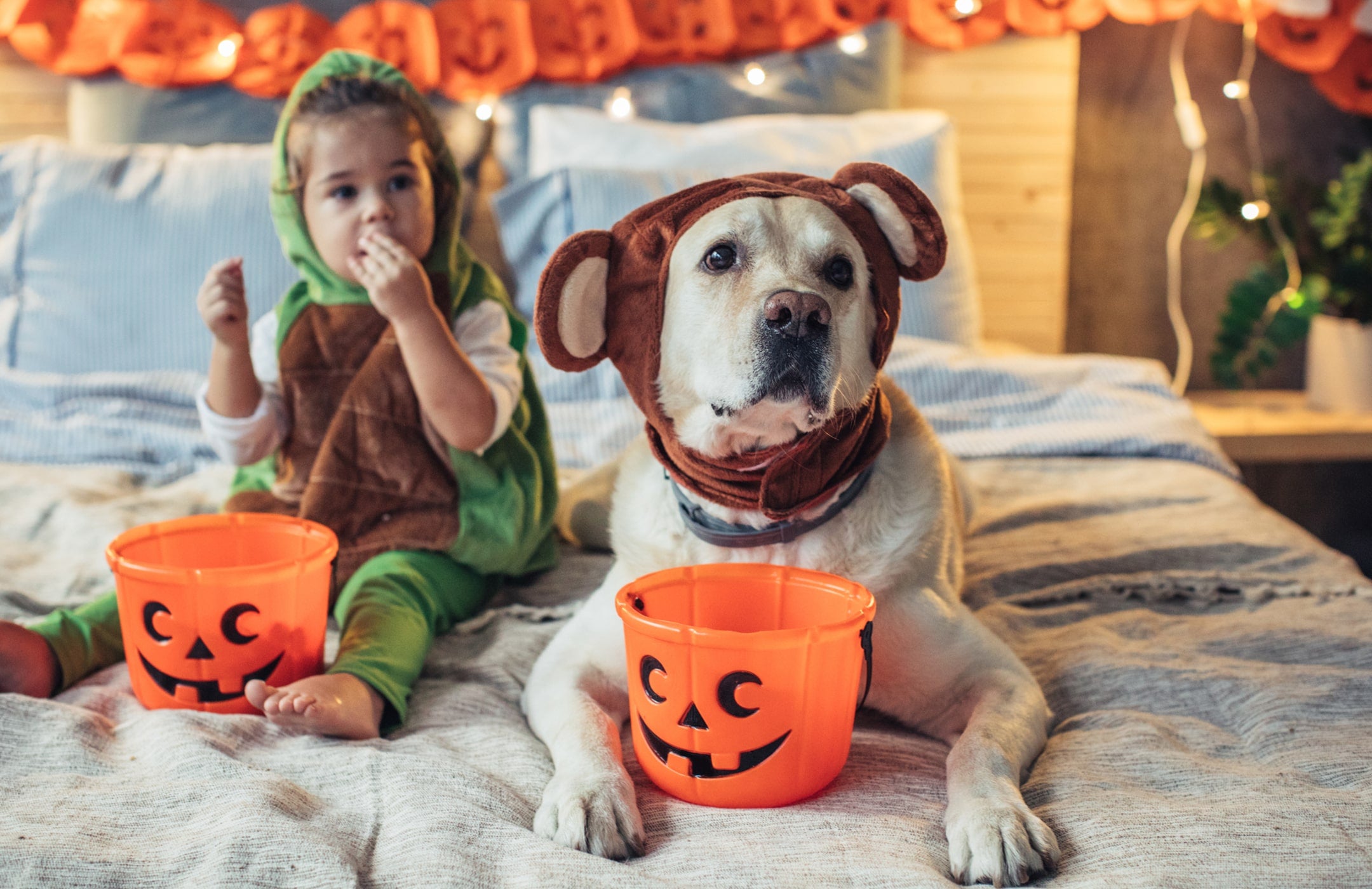With Halloween just around the corner, it’s time to talk candy. Knowing it’s going to be everywhere, how can parents navigate this sticky, sugary terrain? To help us, we went to the experts: Board-certified pediatrician Dr. Krupa Playforth, MD and pediatric registered dietitian nutritionist Kacie Barnes, MCN, RDN, LD.
Yes, Halloween Candy is OK
“As a pediatrician and a mother,” Dr. Playforth says, “I firmly believe in the 80/20 rule: sticking to the guidelines and ‘rules’ 80% of the time is sufficient, but otherwise, having fun in moderation is important as well.” That said, you want to be mindful of your little one’s age. For kids under 2, “We do recommend limiting sugar intake,” she says, “so offering alternatives, such as Once Upon a Farm Pouches or yogurt melts, is often sufficient.” If they get their hands on some candy though, it’s not the end of the world. For older children (and adults) it’s okay to indulge a bit!
Encourage Sitting While Snacking
For all kids, it’s essential to pay attention to—and try to avoid—all choking hazards. To minimize risk, Barnes encourages kids to sit (i.e., not run around) while eating candy. Additionally, she says, “I like to give 1–2 opportunities on Halloween to sit down and mindfully enjoy their candy, versus letting them just grab a piece whenever they feel like it.” That way, they can start to understand how the food makes their body feel and be more aware of when they’ve had enough.
Candy Considerations
Yes, candy is okay in moderation, but there are things to look out for. Dr. Playforth provided some guidance here, too:
- Avoid choking hazards for young kids, including hard candy, marshmallows, and popcorn.
- Check for allergens in candy (if your child has allergies).
- Avoiding homemade treats from strangers and any partially open candy.
- Check expiration dates, notably on candy your child has stashed for long stretches.
“As to whether there are better or worse Halloween treats,” Dr. Playforth says, “I think at the end of the day sugar is sugar.” Barnes agrees. “From a health perspective, all candy is what I would consider a treat, and I encourage you to let your child choose what they enjoy the most.” She opts for chocolate over pure sugar options for kids “because the bit of fat in the chocolate treats can help keep them a little more satisfied.”
Should We Be Setting Candy Limits?
“It starts with modeling a healthy relationship to foods like candy.” Barnes says. Use appropriate language, avoid demonizing certain foods. It’s about finding the balance between being too restrictive and having no limits. She recommends limiting candy to certain times, like after dinner or during afternoon snack.
Maybe on Halloween night, after they sort their candy, “it’s okay if you decide to let them have as much as they want during that sitting.” Even if it feels like they are going to have too much, she explains, “we all are human and have too much sometimes! It’s part of the learning process.”
After Halloween, “you might decide that they can pick two or three pieces to have after dinner, for example.” Make a plan—kids like to know what to expect—and hopefully this helps avoid some candy-related meltdowns.
Don’t Forget the "Switch Witch"
Thanks to Dr. Playforth, we’ve also been introduced to the concept of the Switch Witch, which she notes can be very valuable after Halloween is over. “The idea here is trading candy in for a less food-focused gift that can provide longer value.” Brilliant.
As you carve your pumpkins, decorate your house, and coordinate costumes, hopefully this expert-led tour through candy land will help you enjoy more and stress less this Halloween. That’s the goal, after all!

